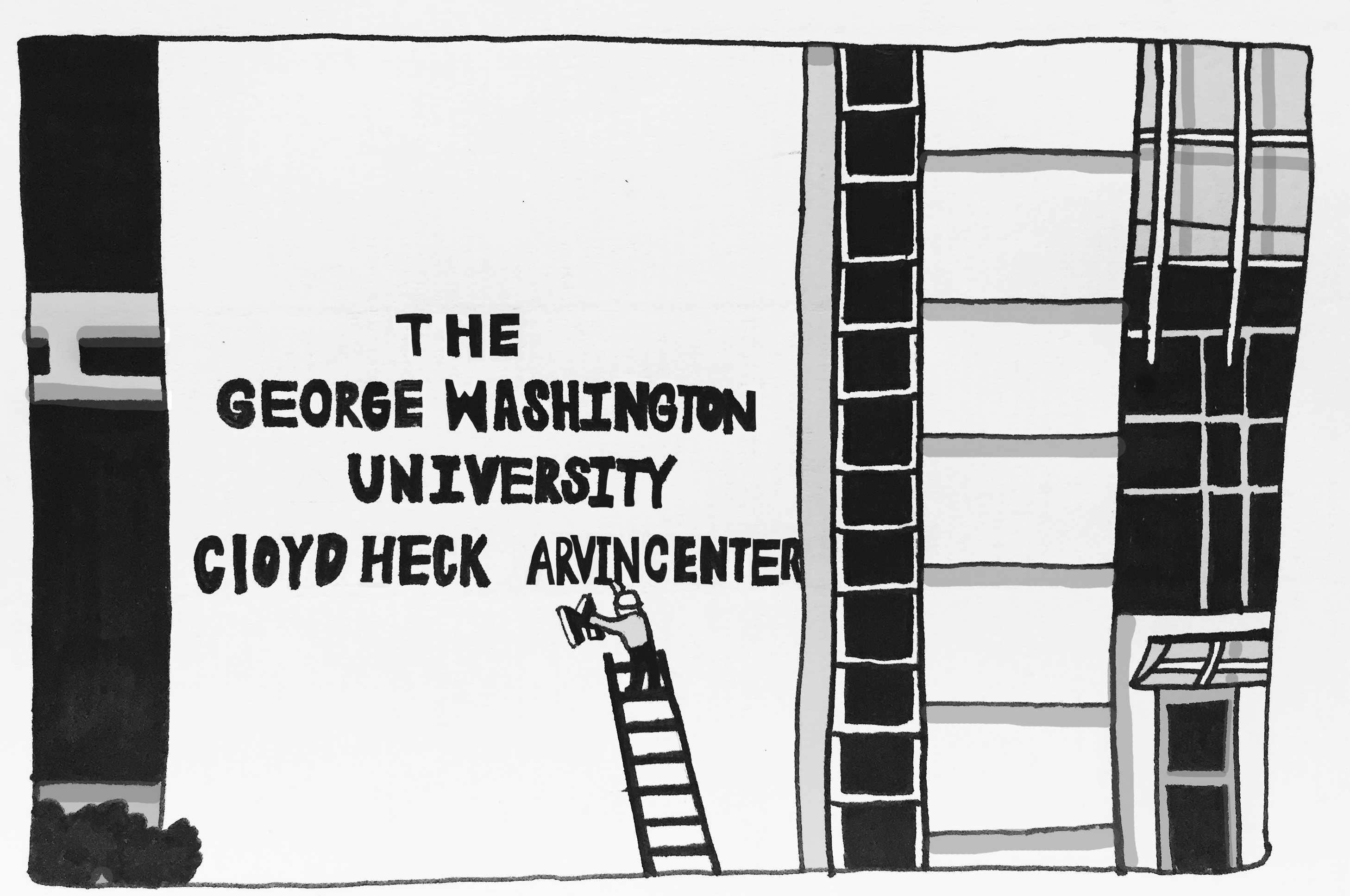Building names are largely symbolic. Universities and other organizations plaster the names of prominent leaders, donors and other highly-regarded figures on buildings to honor an individual’s achievements. But at GW, the University elected to name the Marvin Center after former University President Cloyd Heck Marvin and in doing so, decided to celebrate a racist.
During his tenure as president, Marvin doubled enrollment, tripled faculty size and increased the endowment eight times over. Those numbers are significant, and past University presidents and administrators have supported celebrating him by having his name plastered outside and inside the heart of GW. But the former president also employed racist policies and attitudes toward his own students, administrators and faculty.
Student Association leaders pushed for administrators to re-evaluate the Marvin Center and other buildings with controversial names last year. Unfortunately, the task force stalled before the group could offer any suggestions for new names, but leaders relaunched the group last month and plan to work directly with administrators and faculty to spark meaningful change.

Cartoon by Margaret Grobowski
Most students probably don’t know much about Marvin and may not be affected by the fact that he is the namesake of our student center, but he should not be honored on campus.
He was the longest serving president, heading GW from 1927 to 1959, but his legacy is overshadowed by the fact that he pushed against desegregation and had a silencing nature toward students and staff who disagreed with him. Although some students from minority groups were admitted during Marvin’s term, he restricted these students to night courses as he believed that students performed best when they were in a “homogenous group.” As president, Marvin also often punished students for criticizing him and his administration.
The current administration at GW may not have decided to name the Marvin Center after a man who was racist, but they have the power to change it – and they should. Ignoring this fact and ignoring the requests of students, who have advocated this change for years, is unacceptable. To continue to celebrate this man, who did not stand for the values of the University, is disrespectful to the GW community.
This is not the first time students have advocated the University to change the name of the Marvin Center, but it should be the last.
When the building was named after Marvin in 1970, students protested and those protests have ceased to end more than 40 years later.
Task forces and forums have encouraged administrators to change the name of the student center for years, but it shouldn’t take multiple meetings spanning years to determine that this man is not a representative that GW should be proud of, and we must change the name immediately.
The Marvin Center serves as the student center, but its also an unofficial dining hall, popular study space, conference area and so much more. The purpose of this building is to bring all types of students together for a myriad of reasons. With that in mind, it is especially inappropriate for the former president’s name to be attached to such an integral part of campus. In a time when administrators are working to create a more inclusive campus, it is unacceptable that administrators leave his name on a platform that is intended to bring the community together.
With this rebooted task force, University President Thomas LeBlanc has a chance to make a lasting and meaningful impact on his students. Students have supported renaming the building for years and a university president should stand behind their students, but if he wants to support the current name – like former University Presidents Lloyd Elliott and Stephen Joel Trachtenberg – he should say so, because as the spokesperson of the University his standing should be know, so students can be informed on how he has responded to their requests.
Changing building names on college campuses is not a new phenomenon. In fact, two of GW’s peer schools, Georgetown University and the University of Pittsburgh have recently changed buildings that were named after individuals associated with slavery and the Tuskegee experiments, which conducted human trials on black men without their informed consent. The University should follow in the footsteps of these schools by bravely removing former leaders from their monuments if they were given pedestals they don’t deserve.
If administrators decide to change the name of the Marvin Center, it could be a watershed moment for other buildings with controversial names. The task force, while focused on the student center, is also scrutinizing other buildings like Lisner Auditorium, which declined entry to black patrons. Each and every building that the task force wants to evaluate should be addressed on a case-by-case basis and the University should be responsive on whether they agree with the group.
Renaming a building doesn’t change history. But to uplift an individual who advocated against certain students on the basis of race and did not represent the University’s values is an insult to former, current and prospective students alike. It’s time to finally listen to students and change the name of the Marvin Center.
The editorial board is composed of Hatchet staff members and operates separately from the newsroom. This week’s piece was written by opinions editor Renee Pineda based on conversations with The Hatchet’s editorial board, which is composed of managing director Elise Zaidi, managing editor Matt Cullen, design editor Zach Slotkin, culture editor Margot Dynes, sports editor Barbara Alberts and contributing opinions editor Kiran Hoeffner-Shah.


